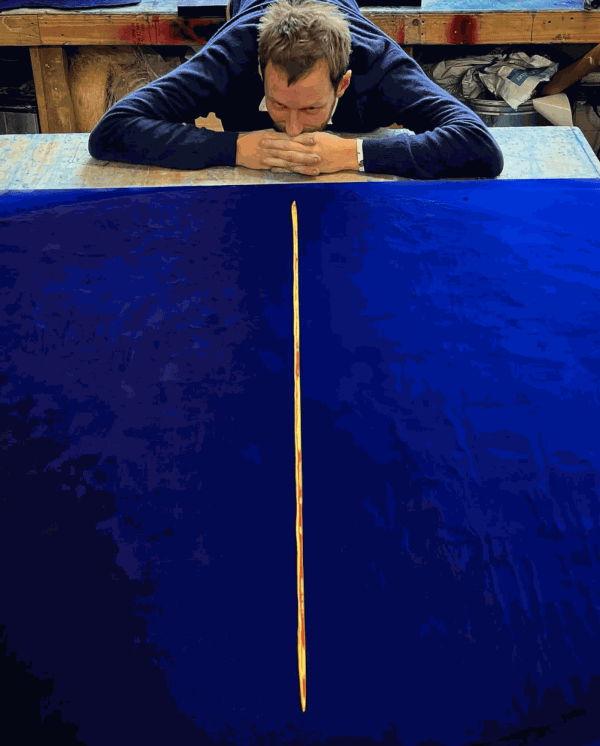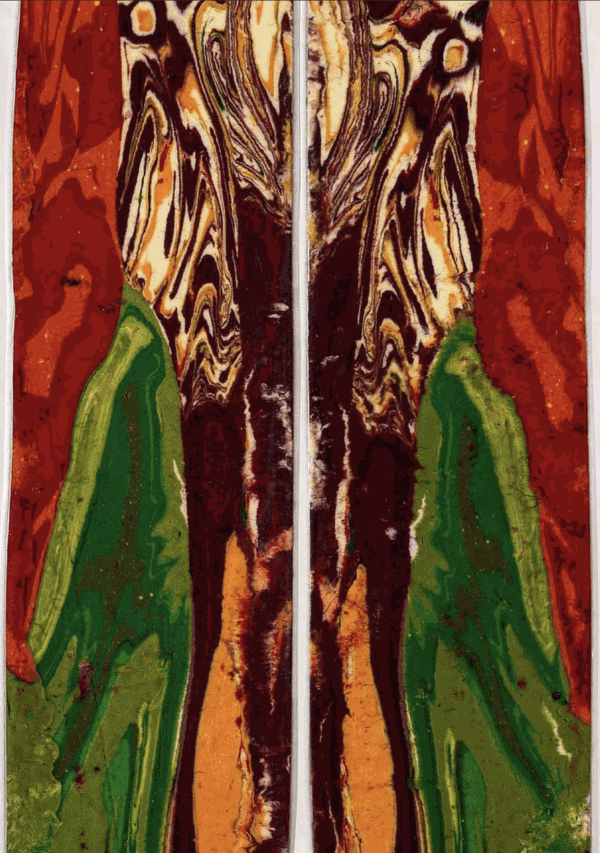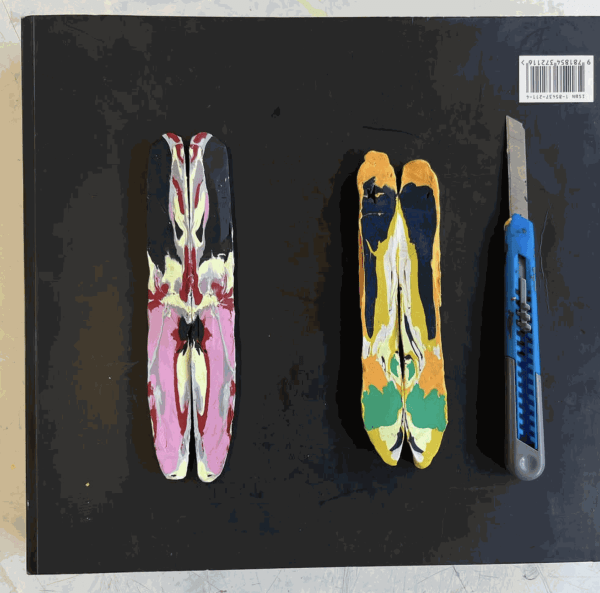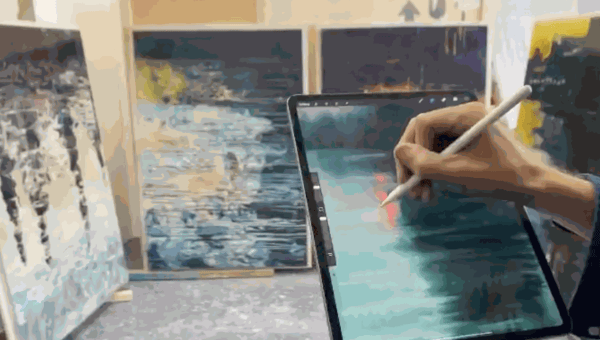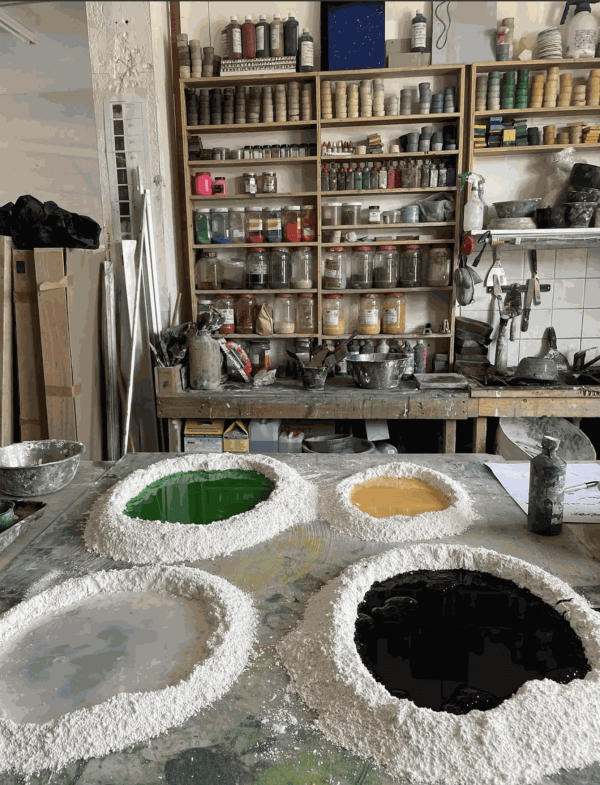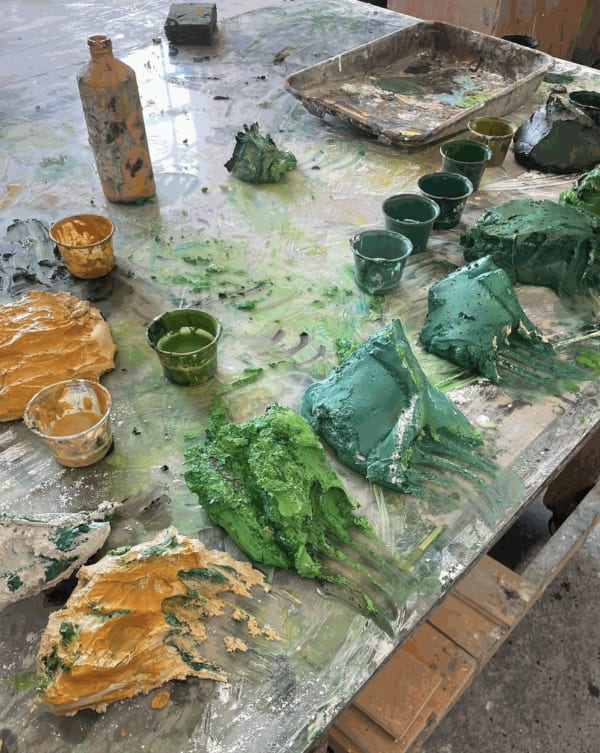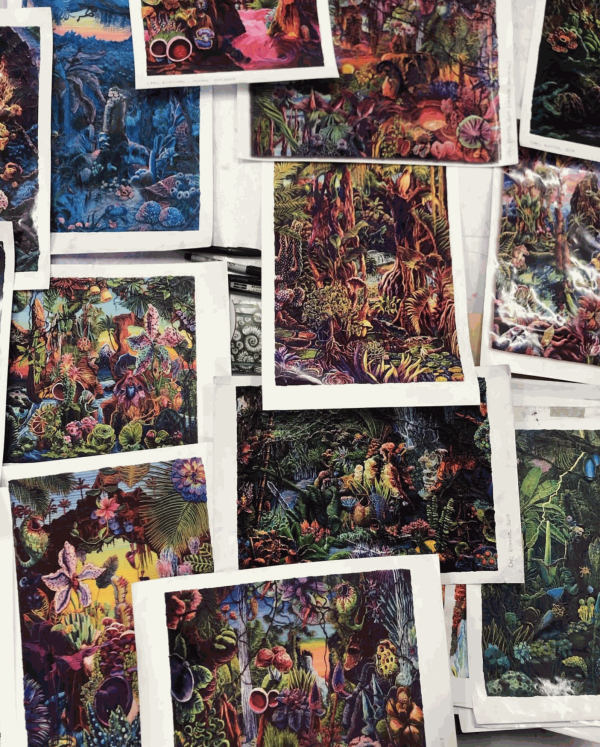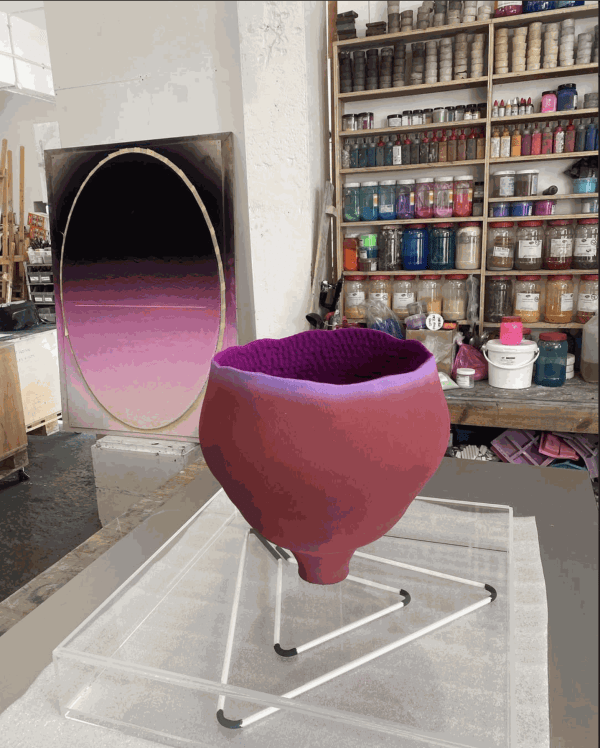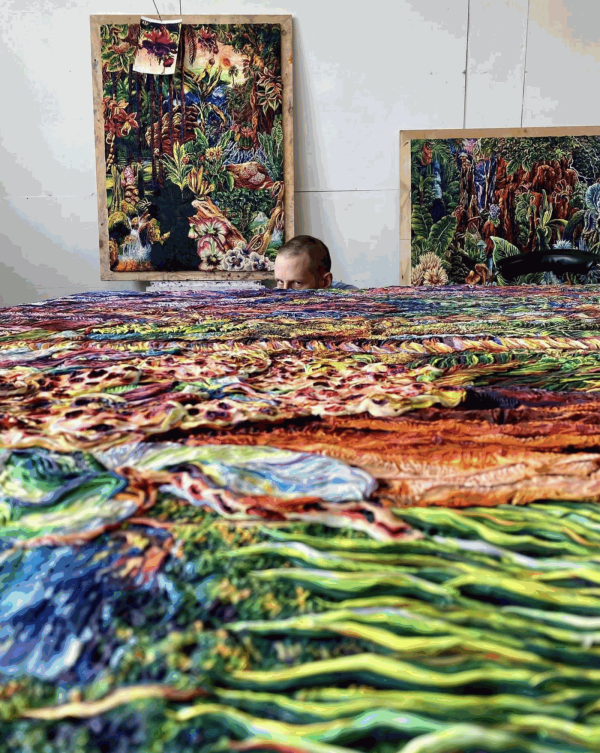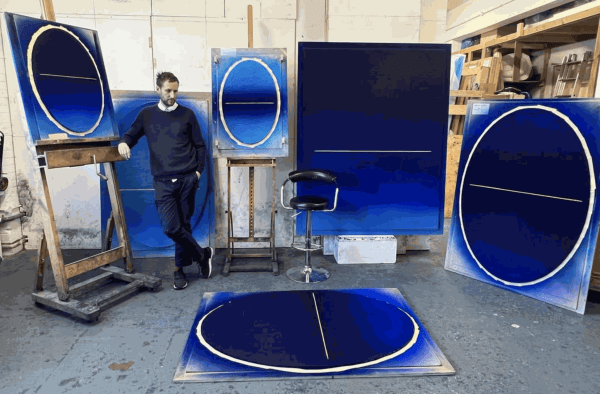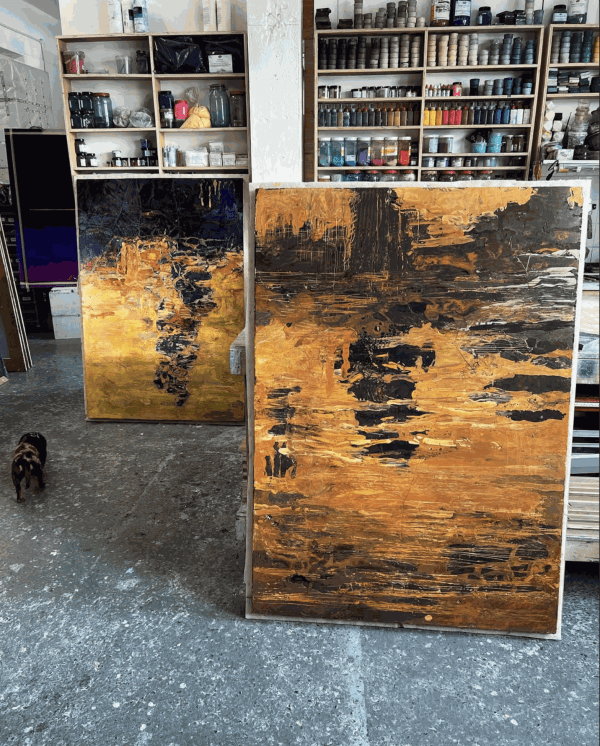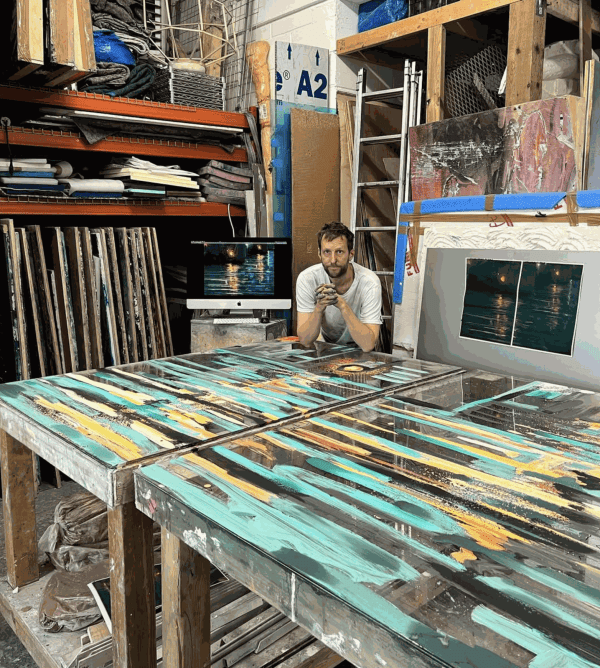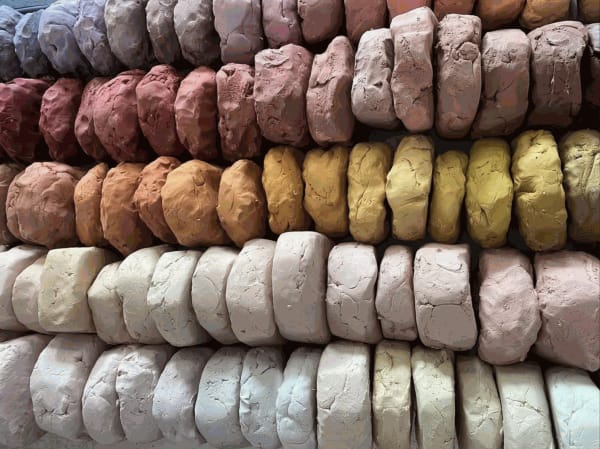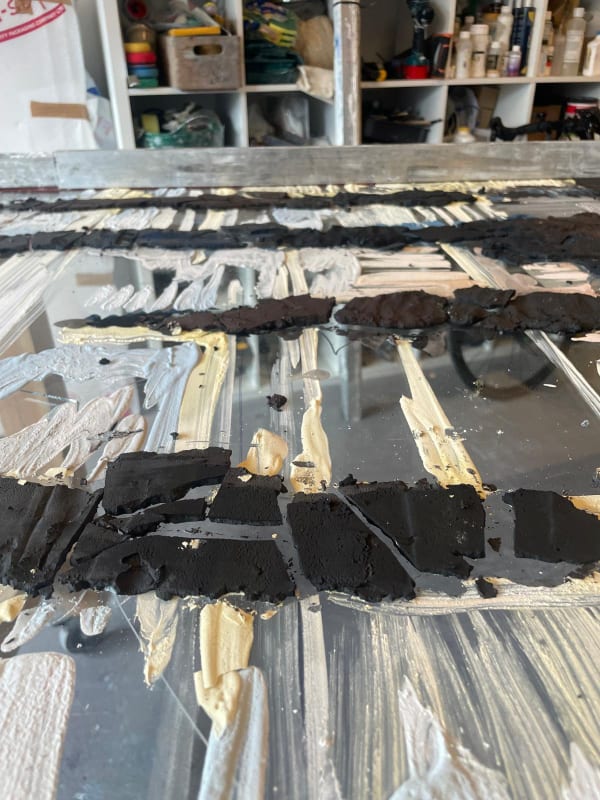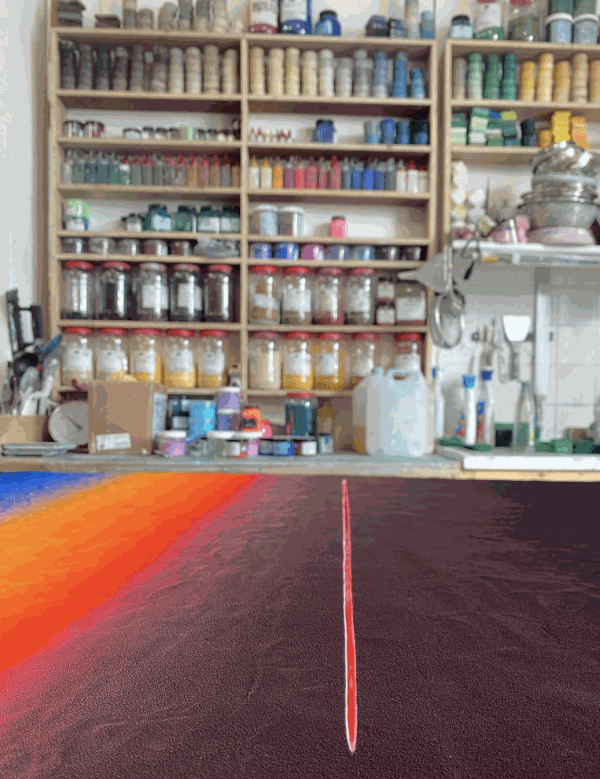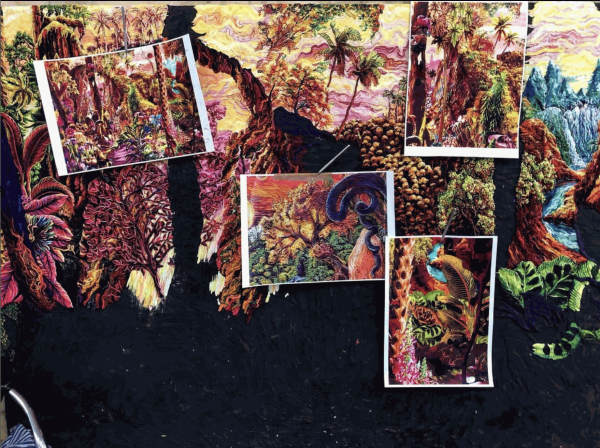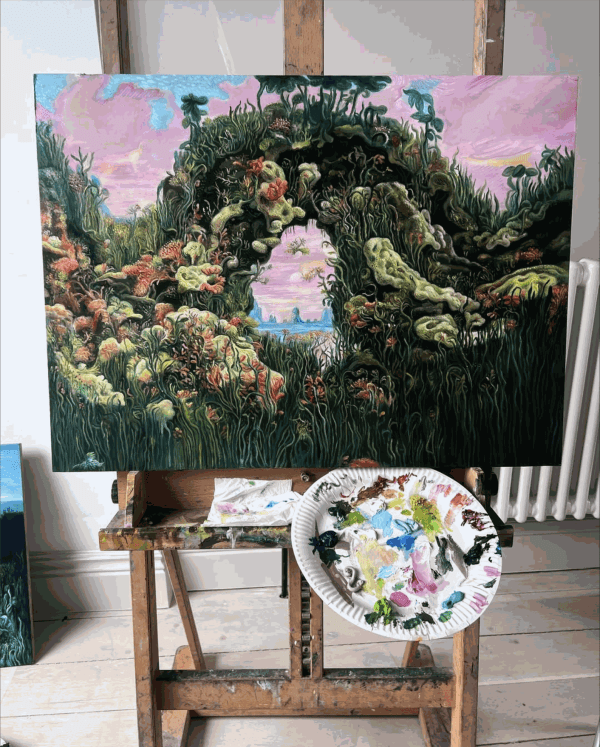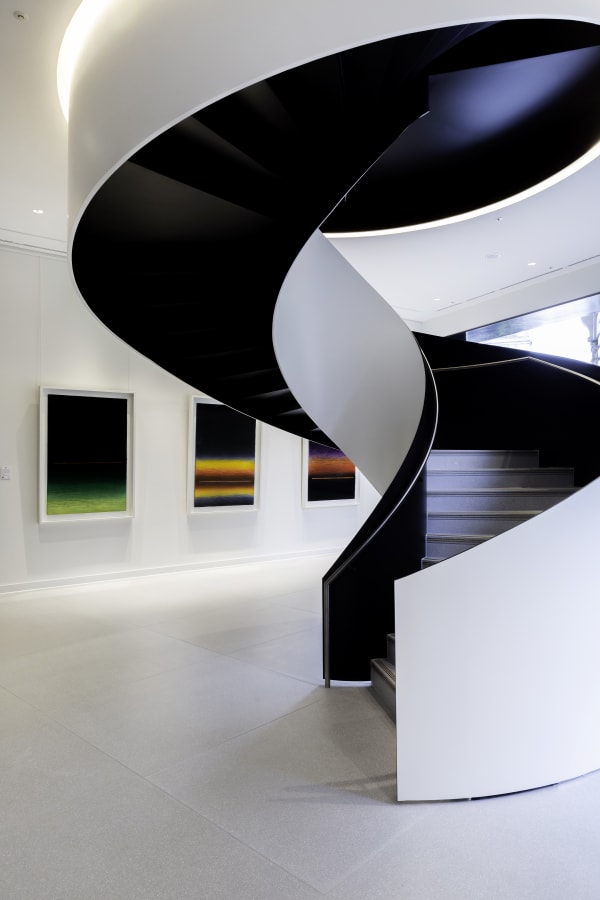-
 Mixing pigment with plaster for scagliola
Mixing pigment with plaster for scagliola -
In his Jungle series,
Henry Hudson advanced his distinctive use of plasticine as a medium for sculptural painting - a material he first adopted after graduating from Central Saint Martins. At the time, he needed supplies for an upcoming show but couldn’t afford oil paints to achieve the impasto effect he envisioned. Plasticine, with its vibrant colors reminiscent of Philip Guston’s palette, offered an unexpected solution. When Hudson began heating and blending the bars, he discovered it could be manipulated much like paint - opening up a unique and expressive avenue for experimentation. This approach bridged the visceral impasto techniques of artists like Freud and Auerbach with something altogether more performative and eccentric.
Hudson's plasticine works spanned several distinct bodies of work, including the narrative Young Sen series, shown at Sotheby’s, and the satirical A Rake Revisited, exhibited at the Sir John Soane’s Museum. These paved the way for his most ambitious and internationally recognized project: the Jungle series, exhibited all over the world.
To create these works, Hudson layered thin sheets of black plasticine on aluminum, drew outlines with a biro pen, and worked meticulously from the background forward, mixing each color by hand by combining plasticine with pigment and vaseline to enhance its vividness and malleability. He eventually introduced a Z mixer into the studio, a commercial machine typically used for kneading dough, repurposed here to mix larger quantities of material with precision and consistency. His master drawings pulled from a broad range of sources - from photographs taken during visits to Kew Gardens to historic botanical illustration books - drawing natural comparisons to Henri Rousseau. The process to realize these drawings became so labor-intensive that he eventually brought on assistants to help scale up the work and refine the details. One monumental eight-panel piece took nearly two years of full-time effort.
The studio evolved into a contemporary version of the Renaissance workshop, with assistants trained in Hudson’s techniques and rotated across various jungle scenes. Each composition was layered and sculpted to mimic the heavy impasto of expressionist painting, with every detail overseen, directed, and ultimately completed by Hudson himself.
This studio model fostered a dynamic cross-pollination of ideas - stretching across time periods and disciplines - that elevated creativity beyond the familiar. It ensured the simultaneous preservation of meaning, tradition, and innovation. If we consider intertextuality to be central to artistic practice, then the philosophy behind Hudson’s Jungle studio served as both an active creative agent and a contemporary custodian of that legacy. It is an evolving collaborative ecosystem that enables a multifaceted approach.
-
-

-
-
In his Horizon Line series,
Henry Hudson departed from the intricate, horror vacui of his lush jungle scenes, turning instead toward the serene minimalism of calm horizons. Though the subject matter changed, he continued to work with the same materials, plasticine and vivid pigment, but in a newly refined and masterful way.
Hudson drew inspiration for these works while flying, gazing out the window at the endless horizons. In those moments, a broader perspective emerged - one free from identity and societal constraints - evoking an ethereal sense of higher power or a spiritual journey. It's a compelling contrast: the technology that lifts us into the sky simultaneously brings us closer to the vastness of nature.
Hudson began by creating a layered base of plasticine. He then developed a unique method of mixing pigment with adhesive and alcohol, allowing it to be sprayed through an airbrush. This almost alchemical process transforms the mixture from soluble to liquid and back again. To facilitate this technique, he built a custom spray booth in his studio, enabling the fine diffusion of bright pigment across the plasticine surface - a stark contrast to his previous method of heating the plasticine and mixing pigment directly into it, as seen in his Jungle series. This new approach preserves the pigment in its purest form, producing a color that appears almost luminescent in its intensity.
To create the defining horizon line, Hudson employs a specialized cutting tool of his own design, slicing through the spectrum of color in a single, decisive motion. This act is final and irreversible, bringing a sense of drama and risk to the studio. One slight misstep could undo the entire work - an artistic gesture that is as much about control as it is about surrender.






